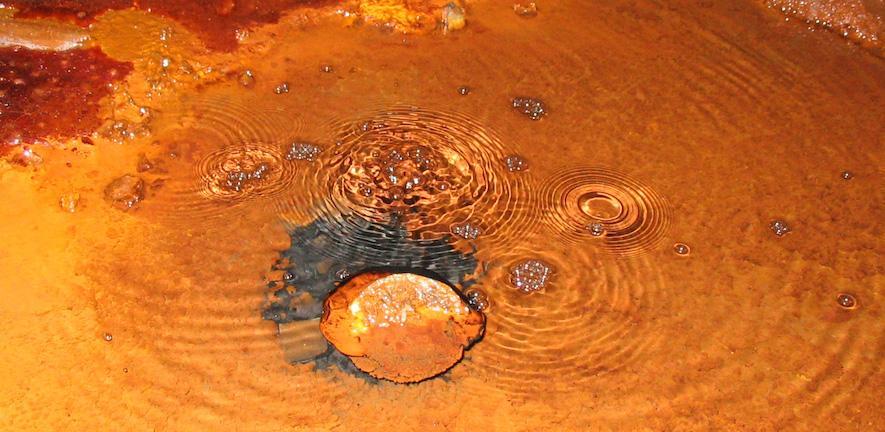
Submitted by Dr C.M. Martin-Jones on Wed, 15/09/2021 - 13:05
What conditions lead to the formation of hydrogen needed for early life on rocky planets? Cambridge Earth Science's Dr Paul Rimmer and Prof. Nick Tosca recently featured amongst a panel of earth scientists who discussed this conundrum.
Prebiotic chemistry deals with the synthesis and interaction of those organic compounds which might have been present before life began. So, what are sufficient conditions for the synthesis of the organic molecules constituting the building blocks of life as we know it? This was the subject of discussion at a recent IPLU meeting.
Dr Paul Rimmer of Cambridge’s Department of Earth Sciences who is also affiliated with Cambridge’s Cavendish Laboratory and MRC Laboratory of Molecular Biology brought together three Earth scientists, Professor Alexis S. Templeton (University of Colorado), Professor Nick Tosca (University of Cambridge) and Professor Barbara Sherwood Lollar (University of Toronto), to discuss mechanisms involving the emergence of such chemistry under different conditions billions of years ago on Earth and potentially on other planets and moons.
Rimmer opened the discussion with an introduction on the importance of hydrogen in prebiotic chemistry. Excess of hydrogen on Earth might have originated from a variety of processes. One process involves giant comet impacts and the iron they carry with them, followed by the reaction of iron with water and the release of hydrogen. Hydrogen can lead to reducing conditions essential for prebiotic chemistry. Also, hydrogen is a source of food effectively for early life.
Nick Tosca, Professor of Mineralogy and Petrology at the University of Cambridge, spoke about “Fluid mixing and low-temperature H2 production on early Mars (and Earth?)”.
Tosca commented on his involvement in recent Mars missions: “Our interest in hydrogen started with the Mars Science Laboratory rover, which ended up landing on the surface of Mars in 2012, and when that rover started analyzing a succession of mudstones and sandstones preserved on the surface of Mars.”
The Martian surface preserves an extensive sedimentary record, whereas on Earth, most of these rocks have long ago been obliterated, so “If one can get a rover to the surface of Mars and carefully pick an outcrop or a succession that can constrain paleoenvironments, then you can come up with a series of observational constraints and what early planetary environments might have been like”, said Tosca.
Tosca mentioned that on Mars there’s plenty of magnetite and part of his studies have involved trying to replicate the mechanisms that might have led to the formation of this mineral on Mars. Referring to one of his experiments he said “…Over a couple of days or so, we believe that the green rust is transforming to magnetite, not through a solid-state transformation, but a dissolution reprecipitation transformation, simply due to its thermodynamic metastability with respect to magnetite. This is a really interesting mechanism and has the potential to produce rather large quantities of hydrogen.”
The typical approach scientists take when trying to unravel ways in which chemical compounds, such as hydrogen cyanide, cyanoacetylene, or formaldehyde might have emerged, involves three key aspects: investigate whether places on Earth might have conditions that are like the ones present billions of years ago, try reproducing these mechanisms in a lab, and lastly come up with simulations. This culminates in the development of models that might explain plausible ways in which these compounds might have formed as well as potentially clarify what to look for outside Earth when trying to identify planets that might bear signs of life or biosignatures.
You can read more about the panel discussion on the IPLU website.
